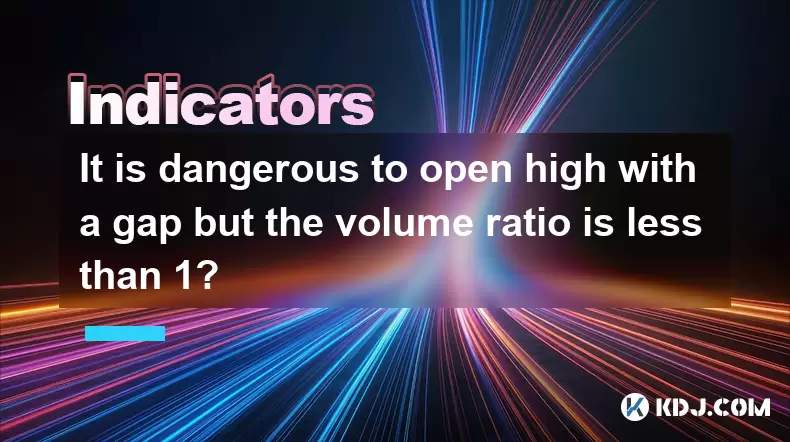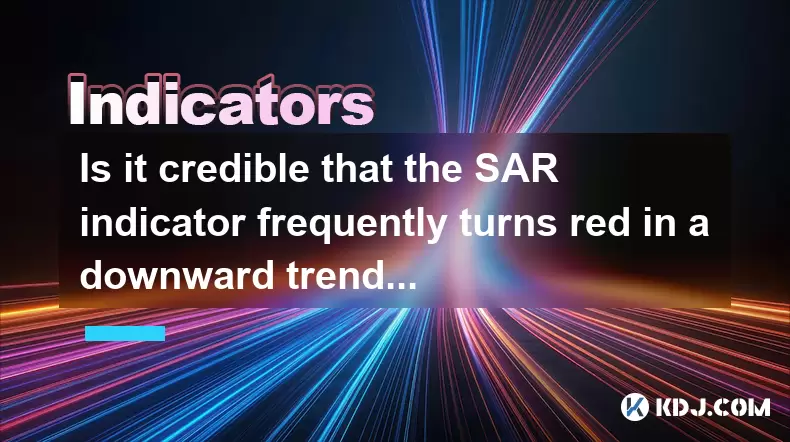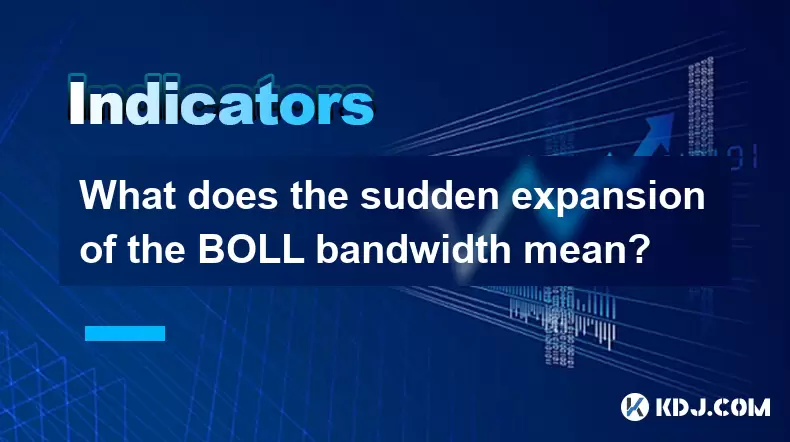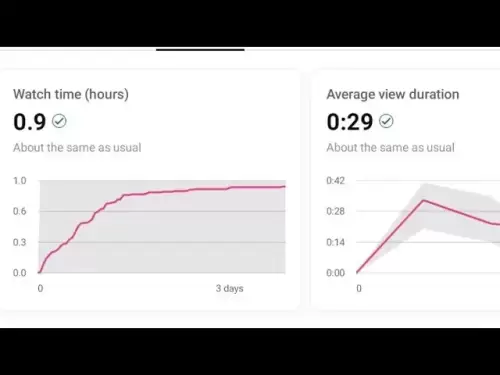-
 Bitcoin
Bitcoin $103,456.1111
0.49% -
 Ethereum
Ethereum $2,414.9631
0.02% -
 Tether USDt
Tether USDt $1.0006
0.05% -
 XRP
XRP $2.1083
0.24% -
 BNB
BNB $634.8760
-0.76% -
 Solana
Solana $139.8437
1.94% -
 USDC
USDC $0.9998
-0.01% -
 TRON
TRON $0.2737
0.97% -
 Dogecoin
Dogecoin $0.1602
0.20% -
 Cardano
Cardano $0.5737
1.08% -
 Hyperliquid
Hyperliquid $32.9779
-2.54% -
 Bitcoin Cash
Bitcoin Cash $474.8886
-1.80% -
 Sui
Sui $2.6272
-1.99% -
 Chainlink
Chainlink $12.4878
0.14% -
 UNUS SED LEO
UNUS SED LEO $8.9234
0.35% -
 Stellar
Stellar $0.2411
-0.18% -
 Avalanche
Avalanche $17.0274
-0.70% -
 Toncoin
Toncoin $2.8936
-1.11% -
 Shiba Inu
Shiba Inu $0.0...01112
-0.58% -
 Litecoin
Litecoin $82.6982
1.33% -
 Hedera
Hedera $0.1423
-0.05% -
 Monero
Monero $314.8455
3.26% -
 Ethena USDe
Ethena USDe $1.0006
0.01% -
 Polkadot
Polkadot $3.4043
1.14% -
 Dai
Dai $0.9999
0.01% -
 Bitget Token
Bitget Token $4.2848
-0.13% -
 Uniswap
Uniswap $6.8748
-5.45% -
 Pepe
Pepe $0.0...09661
0.52% -
 Pi
Pi $0.5359
1.19% -
 Aave
Aave $242.9168
-1.03%
It is dangerous to open high with a gap but the volume ratio is less than 1?
A cryptocurrency gapping up with low volume often signals weak market support, increasing the risk of a sharp reversal as traders question the rally's legitimacy.
Jun 21, 2025 at 11:14 pm

Understanding the Concept of Gapping Up in Cryptocurrency
In cryptocurrency trading, gapping up refers to a situation where the opening price of an asset is significantly higher than its previous closing price. This phenomenon often occurs due to market news, investor sentiment shifts, or external events that impact demand overnight or over weekends when markets are closed.
Unlike traditional stock markets, which have fixed trading hours, crypto markets operate 24/7. However, gaps still occur during periods of low liquidity or sudden surges in order books. When a cryptocurrency gaps up, it can create a vacuum between the last traded price and the new opening level. This gap may signal strong buying pressure, but it also introduces volatility and uncertainty.
The Role of Volume Ratio in Assessing Gap-Ups
The volume ratio is calculated by comparing the current volume of trades to the average volume over a specified period, typically 10 or 20 days. A volume ratio less than 1 means that the current trading volume is below the average, indicating weaker participation from traders despite the price surge.
When a cryptocurrency gaps up with a volume ratio less than 1, it raises concerns among experienced traders. Normally, a significant upward move should be supported by high trading volume, reflecting genuine interest and confidence from investors. If the volume is low, it suggests that the rally might not be sustainable or could be manipulated by large players pushing the price artificially.
Why Low Volume During a Gap-Up Is a Red Flag
A gap-up with low volume implies that the price increase lacks broad market support. In such cases, the movement may be driven by automated bots, whale manipulation, or thin order books rather than organic demand. These conditions often lead to rapid reversals as soon as more traders enter the market and start selling into the momentum.
Additionally, low volume can indicate that institutional investors are not participating in the rally. Since institutions typically trade in large volumes, their absence might mean they don’t see value at the current levels. Retail traders who follow the initial surge without understanding the underlying strength risk entering at unfavorable prices.
Another concern is liquidity traps. If there's not enough volume behind the price jump, there may not be sufficient buyers to absorb potential sell orders. As a result, the price can drop sharply once early buyers decide to take profits or panic sell.
Technical Implications of High Gaps With Weak Volume
From a technical analysis perspective, a high gap with weak volume can form patterns like bearish engulfing or shooting star candlesticks if followed by a reversal. Traders often look for confirmation signals after a gap-up, such as rejection candles or divergence in momentum indicators like RSI or MACD.
For example, if Bitcoin opens 10% higher but only sees half of its average daily volume within the first hour, it may trigger short-term selling pressure. Traders using chart patterns might interpret this as a false breakout or a trap set by whales trying to liquidate retail positions before reversing the trend.
Moreover, order book analysis becomes critical in these scenarios. A healthy rally usually shows increasing bid sizes across multiple price levels. Conversely, a shallow order book during a gap-up indicates fragile support and increases the likelihood of a pullback.
How to Approach Trading in Such Scenarios
Traders should exercise caution when encountering a gap-up with volume ratio less than 1. One strategy is to wait for volume confirmation before entering long positions. This involves monitoring the first few candlesticks after the gap to see if volume picks up and supports the new price level.
Another approach is to use limit orders instead of market orders to avoid chasing the price. Setting stop-losses below the gap zone can help manage risk if the price starts to reverse.
Some traders also use on-chain metrics alongside volume data. Metrics like exchange inflows/outflows, whale transactions, or social media sentiment can provide additional context about whether the gap-up is backed by real demand or just noise.
Finally, time-based filters can be useful. Waiting until the end of the day or session to assess whether the price holds above the gap level helps filter out false signals. If the price closes near the highs on increased volume, it strengthens the case for a valid move.
- Monitor volume closely after any significant gap-up.
- Analyze the order book depth to check for liquidity support.
- Use technical indicators like RSI or MACD for confirmation.
- Avoid immediate entries; wait for volume and price action confirmation.
- Place stop-loss orders strategically to protect against sudden reversals.
Identifying Fake Breakouts in Crypto Markets
A common pitfall for traders is falling for fake breakouts, especially during gap-ups with low volume. These occur when the price briefly surpasses a key resistance level but fails to maintain momentum. The lack of volume confirms that the breakout wasn't widely accepted by the market.
Fake breakouts often target traders using automated systems or those relying solely on price action. Once the price moves past a psychological level (like $30,000 for Bitcoin), algorithms or whales may dump their holdings, causing a sharp reversal.
To identify fake breakouts:
- Check if volume increases proportionally with the breakout.
- Look for wicks on candlesticks showing rejection of higher prices.
- Verify whether other assets or broader market indices are also moving.
- Use multi-timeframe analysis to spot inconsistencies in lower timeframes.
By applying these checks, traders can better distinguish between authentic rallies and artificial spikes designed to mislead.
Frequently Asked Questions
Q: Can a gap-up ever be reliable without high volume?
While rare, some gap-ups can hold even with low volume if supported by strong fundamentals or macroeconomic factors. However, traders should treat such moves cautiously and seek additional confirmations before committing capital.
Q: How do I calculate the volume ratio for a cryptocurrency?
Divide the current trading volume by the average volume over the last 10 or 20 trading sessions. A ratio below 1 indicates weaker volume compared to historical averages.
Q: Are all gap-ups dangerous in crypto trading?
No, not all gap-ups are dangerous. Those accompanied by high volume and positive catalysts can signal strong trends. The danger arises when volume doesn’t support the price move, suggesting weakness or manipulation.
Q: What tools can help me monitor volume and gaps effectively?
Trading platforms like Binance, Bybit, or CoinMarketCap offer volume charts and gap detection features. Tools like Glassnode or Santiment provide deeper on-chain analytics to validate volume and trader behavior.
Disclaimer:info@kdj.com
The information provided is not trading advice. kdj.com does not assume any responsibility for any investments made based on the information provided in this article. Cryptocurrencies are highly volatile and it is highly recommended that you invest with caution after thorough research!
If you believe that the content used on this website infringes your copyright, please contact us immediately (info@kdj.com) and we will delete it promptly.
- Ethereum Price Under Bearish Pressure: Analyzing the Sell Volume Surge
- 2025-06-22 06:45:12
- Texas, Bitcoin, and the Reserve: A Lone Star State of Digital Finance
- 2025-06-22 06:45:12
- Navigating the Crypto Storm: Bitcoin, Ethereum, XRP, and the Bearish Sentiment
- 2025-06-22 06:25:12
- XRP ETF Approval: A Cryptocurrency Game Changer?
- 2025-06-22 06:25:12
- Texas Bitcoin Reserve: Adoption, Regulation, and the Lone Star State's Crypto Ambitions
- 2025-06-22 06:55:12
- Binance Price Prediction: Spotting MACD Reversals for Potential Gains
- 2025-06-22 06:55:12
Related knowledge

Does the sudden contraction of ATR indicate the end of the trend?
Jun 20,2025 at 11:14pm
Understanding ATR and Its Role in Technical AnalysisThe Average True Range (ATR) is a technical indicator used to measure market volatility. Developed by J. Welles Wilder, ATR calculates the average range of price movement over a specified period, typically 14 periods. It does not indicate direction—only volatility. Traders use ATR to gauge how much an ...

Is it invalid if the DMI crosses but the ADX does not expand?
Jun 21,2025 at 09:35am
Understanding the DMI and ADX RelationshipIn technical analysis, the Directional Movement Index (DMI) consists of two lines: +DI (Positive Directional Indicator) and -DI (Negative Directional Indicator). These indicators are used to determine the direction of a trend. When +DI crosses above -DI, it is often interpreted as a bullish signal, while the opp...

How to filter false signals when the SAR indicator frequently flips?
Jun 21,2025 at 08:43pm
Understanding the SAR Indicator and Its BehaviorThe SAR (Stop and Reverse) indicator is a popular technical analysis tool used in cryptocurrency trading to identify potential reversals in price movement. It appears as a series of dots placed either above or below the price chart, signaling bullish or bearish trends. When the dots are below the price, it...

Is the trend continuation when the Williams indicator is oversold but there is no rebound?
Jun 20,2025 at 11:42pm
Understanding the Williams %R IndicatorThe Williams %R indicator, also known as the Williams Percent Range, is a momentum oscillator used in technical analysis to identify overbought and oversold levels in price movements. It typically ranges from 0 to -100, where values above -20 are considered overbought and values below -80 are considered oversold. T...

Is it credible that the SAR indicator frequently turns red in a downward trend?
Jun 22,2025 at 12:07am
What Is a Bitcoin Wallet and Why Do You Need One?A Bitcoin wallet is a digital tool that allows users to store, send, and receive Bitcoin. Unlike traditional wallets that hold physical currency, Bitcoin wallets do not actually store the cryptocurrency itself. Instead, they manage the private keys that grant access to your Bitcoin on the blockchain. Thes...

What does the sudden expansion of the BOLL bandwidth mean?
Jun 21,2025 at 01:49pm
Understanding the BOLL IndicatorThe BOLL (Bollinger Bands) indicator is a widely used technical analysis tool in cryptocurrency trading. It consists of three lines: a simple moving average (SMA) in the center, with upper and lower bands calculated based on standard deviations from that SMA. These bands dynamically adjust to price volatility. When trader...

Does the sudden contraction of ATR indicate the end of the trend?
Jun 20,2025 at 11:14pm
Understanding ATR and Its Role in Technical AnalysisThe Average True Range (ATR) is a technical indicator used to measure market volatility. Developed by J. Welles Wilder, ATR calculates the average range of price movement over a specified period, typically 14 periods. It does not indicate direction—only volatility. Traders use ATR to gauge how much an ...

Is it invalid if the DMI crosses but the ADX does not expand?
Jun 21,2025 at 09:35am
Understanding the DMI and ADX RelationshipIn technical analysis, the Directional Movement Index (DMI) consists of two lines: +DI (Positive Directional Indicator) and -DI (Negative Directional Indicator). These indicators are used to determine the direction of a trend. When +DI crosses above -DI, it is often interpreted as a bullish signal, while the opp...

How to filter false signals when the SAR indicator frequently flips?
Jun 21,2025 at 08:43pm
Understanding the SAR Indicator and Its BehaviorThe SAR (Stop and Reverse) indicator is a popular technical analysis tool used in cryptocurrency trading to identify potential reversals in price movement. It appears as a series of dots placed either above or below the price chart, signaling bullish or bearish trends. When the dots are below the price, it...

Is the trend continuation when the Williams indicator is oversold but there is no rebound?
Jun 20,2025 at 11:42pm
Understanding the Williams %R IndicatorThe Williams %R indicator, also known as the Williams Percent Range, is a momentum oscillator used in technical analysis to identify overbought and oversold levels in price movements. It typically ranges from 0 to -100, where values above -20 are considered overbought and values below -80 are considered oversold. T...

Is it credible that the SAR indicator frequently turns red in a downward trend?
Jun 22,2025 at 12:07am
What Is a Bitcoin Wallet and Why Do You Need One?A Bitcoin wallet is a digital tool that allows users to store, send, and receive Bitcoin. Unlike traditional wallets that hold physical currency, Bitcoin wallets do not actually store the cryptocurrency itself. Instead, they manage the private keys that grant access to your Bitcoin on the blockchain. Thes...

What does the sudden expansion of the BOLL bandwidth mean?
Jun 21,2025 at 01:49pm
Understanding the BOLL IndicatorThe BOLL (Bollinger Bands) indicator is a widely used technical analysis tool in cryptocurrency trading. It consists of three lines: a simple moving average (SMA) in the center, with upper and lower bands calculated based on standard deviations from that SMA. These bands dynamically adjust to price volatility. When trader...
See all articles
























































































